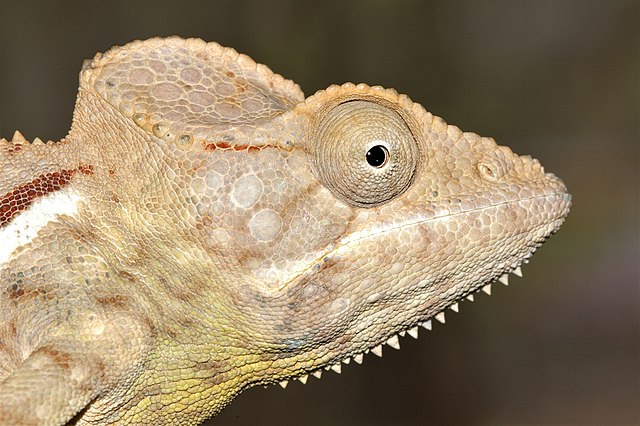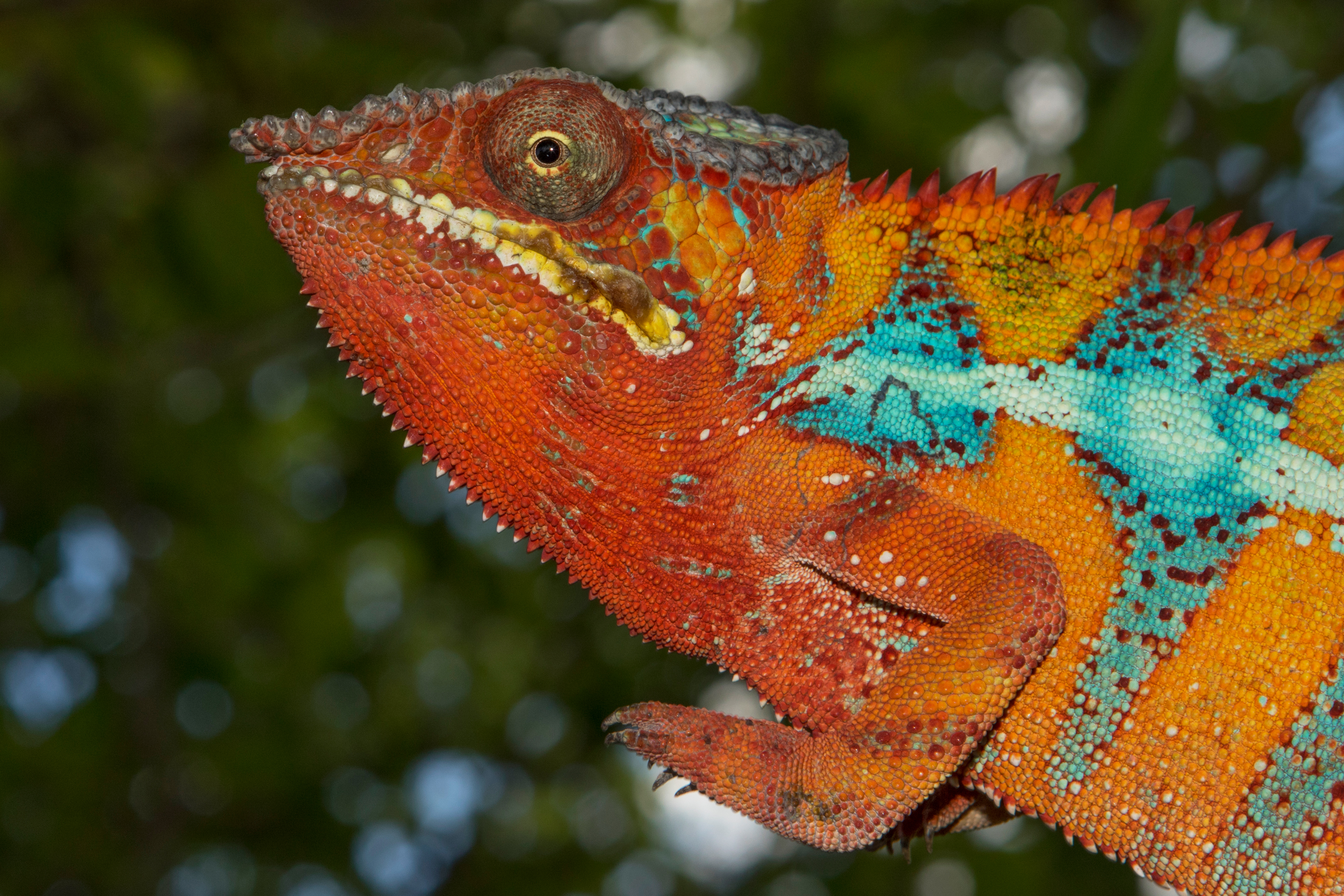Which sex chromosomes are present in chameleons has so far been studied rather sparsely. The Madagascan chameleon genus Furcifer is known to have Z and W chromosomes, although sometimes several Z chromosomes occur, so-called neo-sex chromosomes. Recently in the Czech Republic, scientists examined this deeper.
Blood and tissue samples were taken from 13 chameleons to isolate DNA. The animals sampled included one male and one female each of the species Brookesia therezieni, Calumma glawi, Calumma parsonii, Chamaeleo calyptratus, Furcifer campani, Furcifer labordi, Furcifer lateralis, Furcifer oustaleti, Furcifer pardalis, Furcifer rhinoceratus, Furcifer viridis, Kinyongia boehmei and Trioceros johnstoni. Only in Furcifer oustaleti were two females sampled. Subsequently, the Z1 chromosomes of the panther chameleons and the Z and W chromosomes were analysed by microdissection. Gene coverage analyses were performed for carpet and panther chameleons. In addition, qPCRs were performed to compare the homology of the Z chromosomes.
The results show that the morphology of the Z1 chromosomes of panther chameleons corresponds to the Z chromosome of the entire genus Furcifer. The Z1 chromosome of panther chameleons thus corresponds to the Z chromosome of Furcifer oustaleti. The Z2 chromosome of panther chameleons, on the other hand, is a neo-sex chromosome. Both the Z and W chromosomes in Furcifer oustaleti are probably pseudautosomal. 42 genes have been described as specific for the W chromosome.
A total of 16,947 genes were identified in Furcifer lateralis and 16,909 genes in Furcifer pardalis. The ratio of the number of genes between females and males is 0.35 and 0.65 for the two species. In panther and carpet chameleons, most of the genes on the W and Z chromosomes were found to be the same, with relatively few genes found only on the W chromosome. This finding is surprising, as the researchers had actually expected that the heterochromatic W in Furcifer species would have lost most of its genes compared to the Z chromosome.
The sex chromosomes of the genus Furcifer probably evolved at least 20 million years ago, which roughly corresponds to the time when the species Furcifer campani split off from the other Furcifer species.
Heteromorphic ZZ/ZW sex chromosomes sharing gene content with mammalian XX/XY are conserved in Madagascan chameleons of the genus Furcifer
Michail Rovatsos, Sofia Mazzoleni, Barbora Augstenová, Marie Altmanová, Petr Velenský, Frank Glaw, Antonio Sanchez, Lukáš Kratochvíl
Scientific Reports 14, 2024: 4898.
DOI: 10.1038/s41598-024-55431-9



